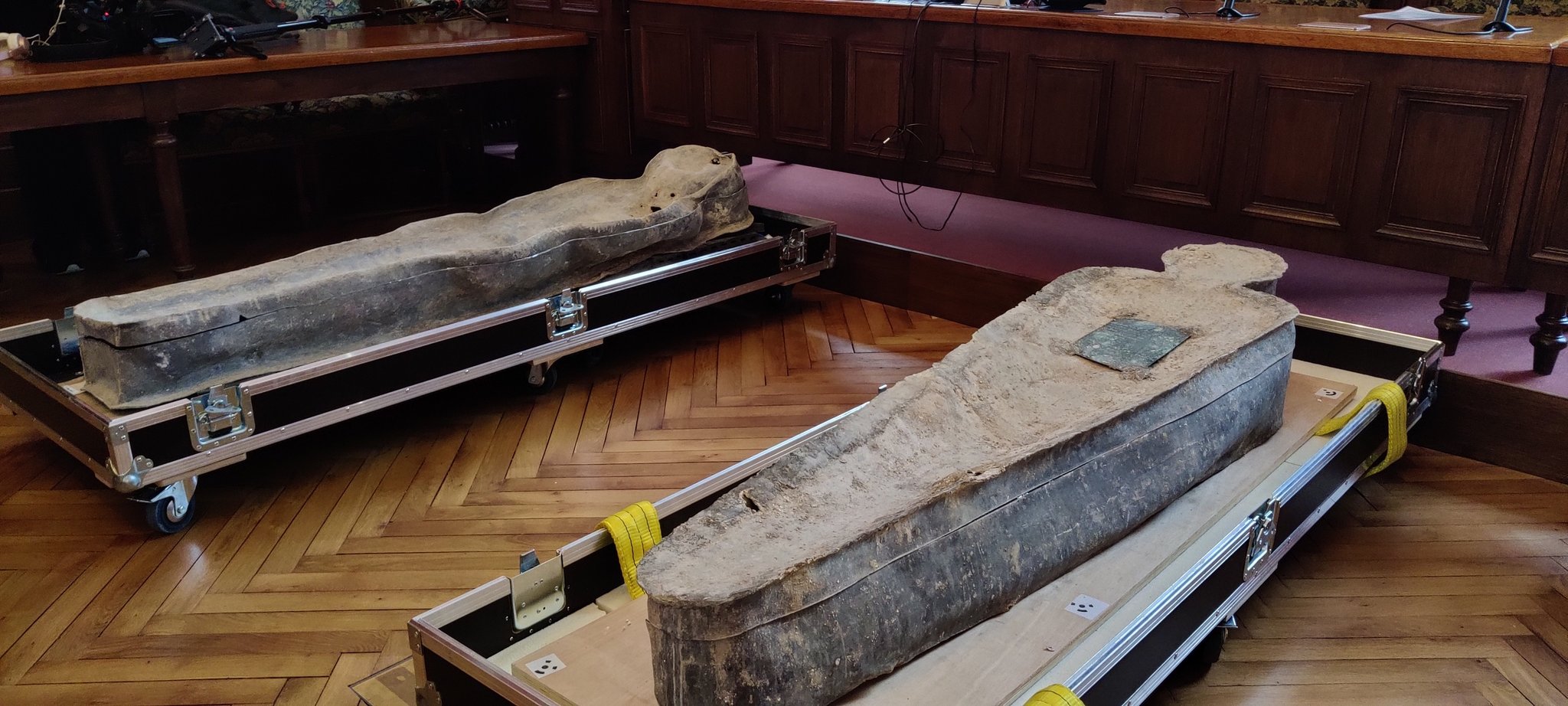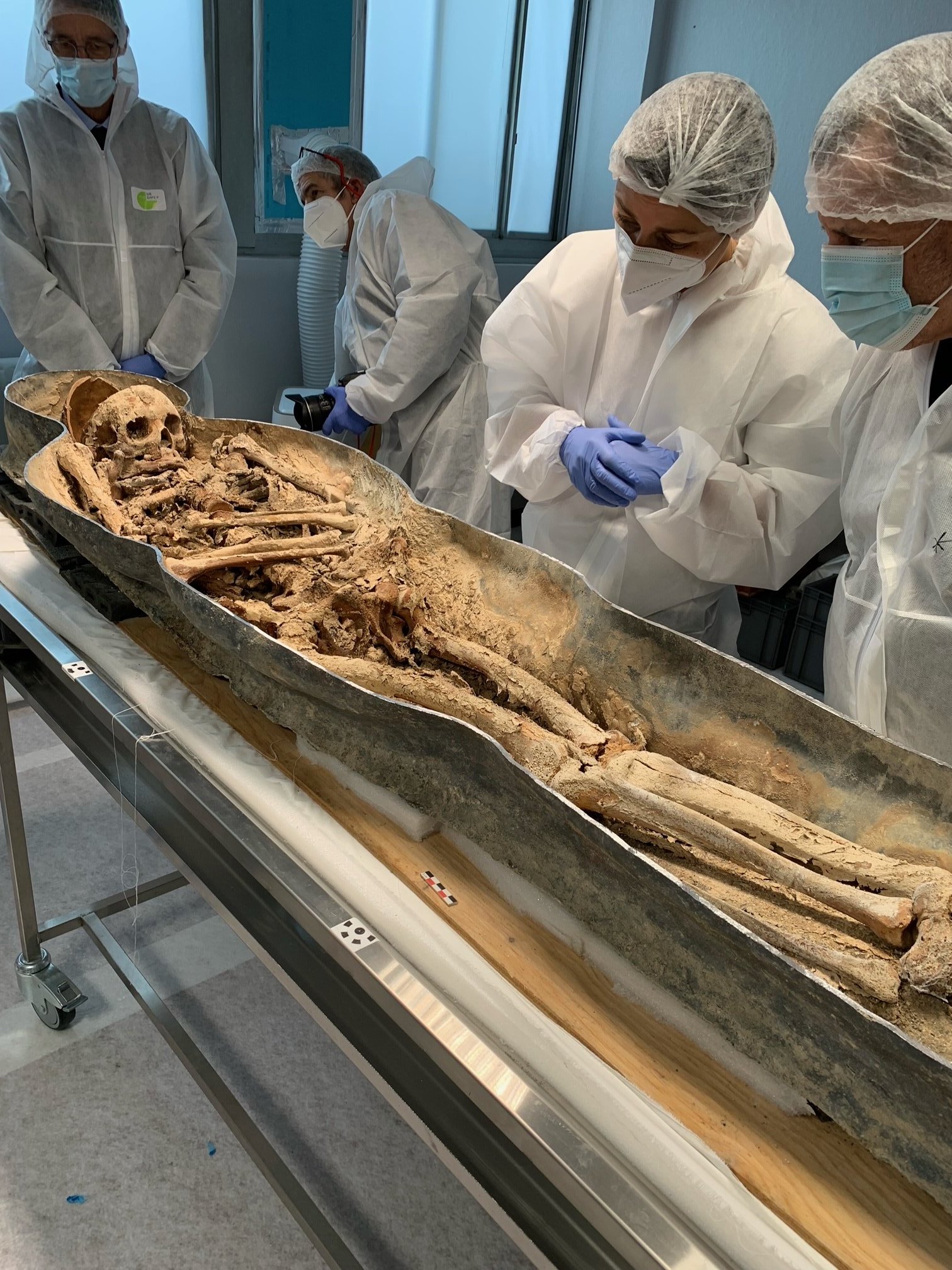Archaeologists discovered lead coffins below the ashes of the 2019 Notre Dame Cathedral fire containing skeletons whose remains have now been identified.
The discovery comes after reconstruction works of the Notre Dame Cathedral in Paris, France in 2022 following a disastrous fire that almost destroyed the cathedral in 2019.
Although the sarcophagi were unearthed earlier this year in March during a dig at the cathedral by France’s national archaeological institute, the discovery was only proclaimed recently.
Remains were examined by a team at the hospital of the University of Toulouse. The team examined and accurately identified the victims, the cause of death, and their lifestyles.
The team said, “The two coffins are very different: they have neither the same form, nor the same method of assembly, nor the same alloy, nor the same age.” This means they are from different layers and thus different eras.
Skeletons belonged to two wealthy men

Buried sixty-five feet beneath the Notre Dame, the skeletons revealed the remains of two wealthy men who died over two hundred years ago.
Further observations by scientists linked the well-preserved skeletal remains to a high priest who lived until the age of eighty-three and a young nobleman between the ages of twenty-five and forty.
According to researchers at the University of Toulouse, burials in cathedrals are practiced throughout the medieval and modern periods, the most sought-after places being near the choir.
The researchers said, “Burial in a lead coffin is reserved for an elite.”
The skeletons of the Notre Dame high priest
Upon unearthing the coffins, one had a brass plaque inscribed with the name Antoine de la Porte and his death date, which was December 24, 1710.
He was a well-respected and famous leader who helped to redevelop the famous Notre Dame Cathedral in his time.
There is also a painting of the high priest by Jean Jouvenet in the Louvre Museum of Paris depicting a mass being held inside the cathedral approximately in the year 1708.
Dubbed ‘jubilee canon,’ the high priest usually provided financial support for the redevelopment of the Notre Dame choir enclosure as related to the Vow of Louis XIII.
Archaeologists discovered Canon’s coffin buried with three medals, although one was not intact when it was extracted from the dirt.
There was no organic tissue left on the bones, but the remains are still well preserved, as are the hair and beard.
However, given his age at death, the scientists said Canon looked pretty healthy when he died. His teeth appear to have been in excellent condition.
Eric Crubézy, a biological anthropologist at the University of Toulouse III who was there to oversee the opening of the coffins said, “They were remarkable for his age. We see this very rarely, but he clearly cleaned his teeth and took care of them.”
Crubézy further said the only real sign of sickness that stood out on the old man’s body was his big toe, which looked like it has been stricken by gout.
Gout is an arthritic disease often associated with royalty who overindulge in meat, seafood, or alcohol.
Skeletons of the unidentified noble man

The second tomb unearthed beneath the ashes of the Notre Dame Cathedral fire was of an identified nobleman. The tomb was molded to perfectly fit the man’s body.
Upon first discovery of the coffins, archaeologists deployed an endoscopic camera inside this sarcophagus. The camera spotted leaves and what was likely a wreath of flowers laid on his head before the burial. According to researchers, this suggests the man was of aristocratic status.
Prior to identification of his age, further examination of the bones revealed he spent much of his early life riding horses due to several markings associated with this activity on his upper limbs.
Nicknamed ‘Le Cavalier’ by the team, analysis has revealed he died between the 14th and 18th centuries likely due to chronic meningitis as a result of tuberculosis.
Analysis is ongoing, but researchers will meet again at some point in the future to pool together their results and discuss overall progress. The first set of results is expected in the first half of 2023.
Findings of these humans might be interesting to scientists and historians, but under French law, bodies found in coffins are not archaeological artifacts. Rather, they are human remains to be treated with respect.
Fires at Notre Dame Cathedral

Currently, there is ongoing reconstruction work on the Notre Dame cathedral, a UNESCO World Heritage landmark building that was devastated during the blaze on April 15, 2019.
Millions worldwide watched in horror as firefighters battled through the night to save the cathedral. A fire tore through its roof and toppled the steeple that broke out just before 7 pm.
During the event, firefighters managed to save Notre Dame’s spectacular Gothic façade and two landmark towers from being destroyed.
Officials have announced that reconstruction on a roof area undergoing renovations should be completed in 2024.